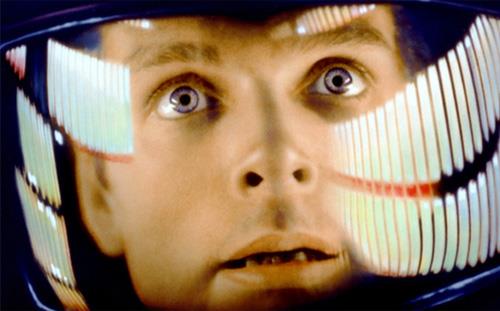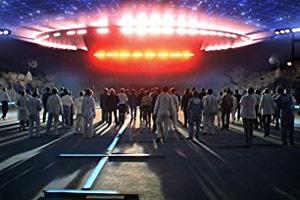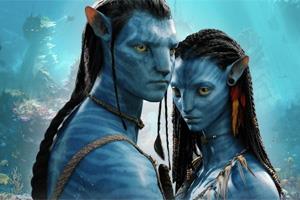 The same way rap started as a bad-boy outlier and today has become the beat of mainstream popular music, science fiction seems to have taken over the movie industry.
The same way rap started as a bad-boy outlier and today has become the beat of mainstream popular music, science fiction seems to have taken over the movie industry.
So it’s pure serendipity that just as The Avengers and its Marvel cousins are again conquering the American Cineplex, AMC is rolling out a new six part-series titled AMC Visionaries: James Cameron’s Story of Science Fiction.
Cameron, the director of the Avatar series among many other films, talks with more than a hundred movie people for this edition of Visionaries, which premieres Monday at 10 p.m. ET.
 “ET” here is “Eastern Time,” not the cute little alien guy from the 1982 Steven Spielberg film. But Spielberg has a prominent role in the first episode, the first 10 minutes of which revolve around Spielberg’s Close Encounters of the Third Kind.
“ET” here is “Eastern Time,” not the cute little alien guy from the 1982 Steven Spielberg film. But Spielberg has a prominent role in the first episode, the first 10 minutes of which revolve around Spielberg’s Close Encounters of the Third Kind.
Cameron is clearly fascinated with that film, and he uses it to make one of his central points. In contrast to the hundreds of alien flicks that portray extra-terrestrials as an invading force intent on obliterating Earth and/or its people, Close Encounters suggests aliens just might come in peace and seek harmony.
In the opposite corner, of course, we have the likes of Independence Day and War of the Worlds.
H.G. Wells wrote War more than a century ago, and after Orson Welles turned it into a famously scary radio broadcast in 1938, it became a blockbuster film with Tom Cruise as the hero Earthling who helps the planet survive against all apparent odds.
Cameron’s experts here suggest War of the Worlds may stand as the purest prototype for good-vs.-evil films simply because the invaders could represent any menacing, soulless, and seemingly invincible force – interplanetary or native – that threatens life as most of us know it.
When Wells wrote the story, the British Empire was near its peak, and it’s suggested here that its colonial subjects may well have seen the Brits as their aliens. In the 1930s, the evil force was Adolf Hitler. In the 1950s, to many in the West, it was communism.
Same story, different nametags.
Cameron explores the evil invader genre, pausing at one point to note that it comes in a couple of different packages. Some alien invaders arrive in monster spaceships, unleashing shock-and-awe weapons of mass destruction like bombs or fire. Others employ more subtle means, like the pods in the classic Invasion of the Body Snatchers.
In any case, aliens make good bad guys, and like cartoon characters, they can do outrageous things that human characters could not.
By the end of the episode, though, Cameron has brought us back to the more unsettling notion that humans should not assume they have moral superiority just because these new creatures may look different or act in puzzling ways.
 Avatar, as explained by stars Zoe Saldana and Sigourney Weaver, portrays human colonizers as soulless, self-absorbed masters of callous destruction. Their intended subjects embody far more of what we consider the best traits of humanity: caring, concern, respect for the rights, and dignity of others.
Avatar, as explained by stars Zoe Saldana and Sigourney Weaver, portrays human colonizers as soulless, self-absorbed masters of callous destruction. Their intended subjects embody far more of what we consider the best traits of humanity: caring, concern, respect for the rights, and dignity of others.
It’s a message Cameron hopes we pick up between mouthfuls of popcorn.
Despite packing a lot of movie talk into each episode, the series does not just target hard-core sci-fi nerds. In fact, some of those folks may be disappointed that we don’t dive into more sci-fi nuts and bolts.
During the moments that do border on geeky and academic, like a discussion on what aliens should look like, the rest of us never feel like we need to leave the room.
The remaining five episodes will cover space exploration, monsters, dark futures, intelligence machines, and time travel.